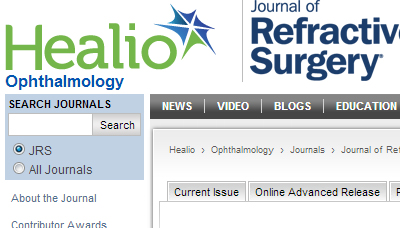Jorge L. Alió, MD, PhD; Ana B. Plaza-Puche, MSc; Jaime Javaloy, MD, PhD; María José Ayala, MD, PhD; Alfredo Vega-Estrada, MD
Journal of Refractive Surger
April 2013 – Volume 29 · Issue 4: 252-259
DOI: 10.3928/1081597X-20130318-04
PURPOSE:To compare the visual and intraocular optical quality outcomes with different designs of the refractive rotationally asymmetric multifocal intraocular lens (MFIOL) (Lentis Mplus; Oculentis GmbH, Berlin, Germany) with or without capsular tension ring (CTR) implantation.
METHODS:One hundred thirty-five consecutive eyes of 78 patients with cataract (ages 36 to 82 years) were divided into three groups: 43 eyes implanted with the C-Loop haptic design without CTR (C-Loop haptic only group); 47 eyes implanted with the C-Loop haptic design with CTR (C-Loop haptic with CTR group); and 45 eyes implanted with the plate-haptic design (plate-haptic group). Visual acuity, contrast sensitivity, defocus curve, and ocular and intraocular optical quality were evaluated at 3 months postoperatively.
RESULTS:Significant differences in the postoperative sphere were found (P = .01), with a more myopic postoperative refraction for the C-Loop haptic only group. No significant differences were detected in photopic and scotopic contrast sensitivity among groups (P ⩾ .05). Significantly better visual acuities were present in the C-Loop haptic with CTR group for the defocus levels of −2.0, −1.5, −1.0, and −0.50 D (P ⩽.03). Statistically significant differences among groups were found in total intraocular root mean square (RMS), high-order intraocular RMS, and intraocular coma-like RMS aberrations (P ⩽.04), with lower values from the plate-haptic group.
CONCLUSIONS:The plate-haptic design and the C-Loop haptic design with CTR implantation both allow good visual rehabilitation. However, better refractive predictability and intraocular optical quality was obtained with the plate-haptic design without CTR implantation. The plate-haptic design seems to be a better design to support rotational asymmetric MFIOL optics.[J Refract Surg. 2013;29(4):252–259.]
From Vissum Corporation, Alicante, Spain (JLA, ABP-P, JJ, MJA, AV-E); and the Division of Ophthalmology, Universidad Miguel Hernández, Alicante, Spain (JLA, JJ).
Supported in part by a grant from the Spanish Ministry of Health, Instituto Carlos III, Red Temática de Investigación Cooperativa en Salud “Patología ocular del envejecimiento, calidad visual y calidad de vida,” Subproyecto de Calidad Visual (RD07/0062)
Dr. Alió is a Clinical Investigator for Oculentis GmbH. The remaining authors have no financial or proprietary interest in the materials presented herein.
AUTHOR CONTRIBUTIONS
Study concept and design (JLA, ABP-P); data collection (MJA, AVE, JJ, ABP-P); analysis and interpretation of data (ABP-P); drafting of the manuscript (ABP-P); critical revision of the manuscript (JLA, MJA, AV-E, JJ); statistical expertise (ABP-P); supervision (JLA, MJA, AV-E, JJ)
Correspondence: Jorge L. Alió, MD, PhD, Avda de Denia s/n, Edificio Vissum, 03016 Alicante, Spain. E-mail: jlalio@vissum.com
Fuente: http://www.healio.com/ophthalmology/journals/jrs/%7B903f72ef-3ac0-4107-ab88-439c106906bf%7D/clinical-and-optical-intraocular-performance-of-rotationally-asymmetric-multifocal-iol-plate-haptic-design-versus-c-loop-haptic-design#

